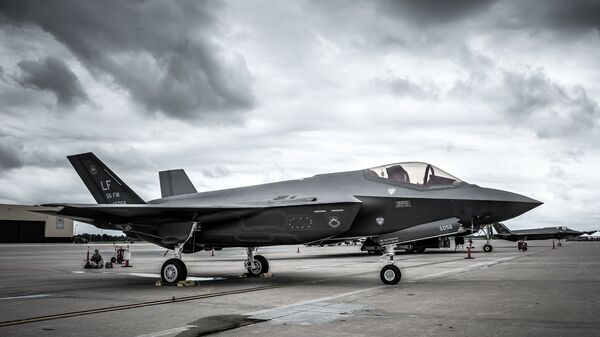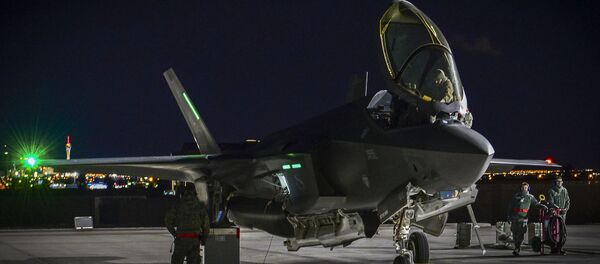Last week, Military.com reported that two airmen at a base in Florida had suffered a brush with death after being "indirectly" struck by lightning while clearing an F-35's flight line ahead of an expected storm.
Commenting on the incident, Task & Purpose explained that the Air Force has been forced to develop an anti-lightning contingency, and that the Marine Corps, which operate their own version of the plane, have also voiced concerns about the Lightning II's ability to handle lightning strikes.
Indeed, unlike traditional aircraft, which have metal skin, the F-35 has a composite skin with radar-absorbent materials aimed at improving its stealth characteristics built in. The advanced stealth feature poses certain risks, however, including the plane's vulnerability to lightning strikes.
In 2012, a Pentagon report found that the F-35 would not be safe flying within 25 miles (40 km) of a thunderstorm due to fears that it could be damaged or destroyed by lightning. Specifically, the report identified "deficiencies" in the plane's fuel tank inerting system which could cause explosions if the plane is struck by lightning.
Lockheed Martin has promised to resolve the problem, with the issue reputedly fixed on aircraft for the US military. Other buyers of the F-35 have not been as fortunate, however, with Australian F-35As reportedly continuing to avoid flights around thunderstorms over the fuel tank issue. This summer, British defence officials demonstrated open annoyance after four F-35s destined for the UK were delayed from flying across the Atlantic Ocean over "adverse weather conditions."



